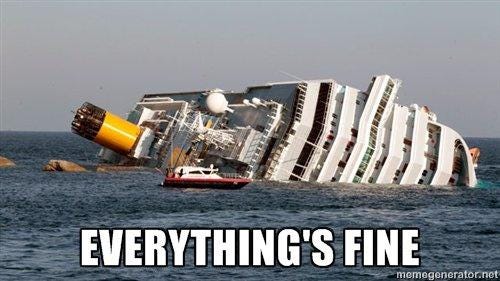What happens if we train them and they leave?
If you don't train your staff, you're risking stagnation, frustration, and ultimately, a team that can’t adapt to the evolving demands of the industry.
In an office somewhere, not so long ago…
A group of developers sat around a meeting table, each armed with a cup of hot coffee (except for one guy who had a can of Pepsi Max—plot twist, that guy was actually me).
The meeting was centred around the lack of skill within the team, as developers were struggling with what should have been basic tasks.
The real issue? There was no support in place to help them improve. I raised my hand and suggested, "Why don’t we just train them?" My line manager at the time shot it down with a dismissive reply: "Ridiculous idea. If we train them, they’ll just leave."
The Culture of Fear
What I didn’t know at the time was that the attitude of “if we train them, they’ll leave” was more than just a one-off response. It was part of a larger culture of fear and complacency. Training and growth were seen as risks rather than opportunities.
The team felt trapped in a cycle of mediocrity, where anyone who showed initiative or asked for help was dismissed or ignored. This lack of support wasn’t just harming individuals—it was stunting the team’s growth as a whole.
Just Ship It!
What senior leadership failed to realise was that their refusal to allow time for training wasn’t just hindering the development of the staff—it was also compromising the quality of the product. Their mindset was clear: employees were there to work on projects, not to learn or improve their skills on company time. Growth and development were seen as distractions from delivering results, and any suggestion of learning opportunities was quickly shut down.
The mantra was simple: “Just get it shipped as quickly as possible!”
The team was left to struggle with outdated skills, resulting in subpar code, uninspired designs, and features that barely met expectations. By prioritising immediate project work over long-term investment in people, leadership not only stagnated the team's growth but also ensured the product would never reach its full potential.
The Aftermath
Well, I left. It took me about 18 months to up-skill enough to become industry-relevant again. Don’t get me wrong, I was good at my job—but only at that job. I spent my days working 9-5 on a legacy platform, ignoring best practices. The Chief Architect didn’t even know what a design pattern was, yet he had the final say on most decisions. The codebase was deteriorating with every commit. Every time I suggested an improvement, it was brushed aside. Code was shipped quickly, but no one bothered with tests—mainly because the platform was never built to accommodate them.
The company? They seemed fine for a few years. The CEO got hair plugs, a shiny new smile, and treated himself to some lavish holidays. The car park was filled with flashy cars—reserved for Senior Leadership, of course—while everyone beneath them was paid about 10k below industry standard. They even splashed out on a table at the local business awards and, strangely enough, won an award.
But what the general public didn’t see was the unhappy staff, disgruntled clients, and an inept leadership team that was too out of touch to recognise the consequences of their actions.
They recently laid off half the engineering staff and switched to an open-source solution. Their clients were fed up with missed deadlines, poor-quality untested code, and shocking performance (e.g - product pages took 10-15 seconds to load unless they were cached).
The (un)funny part? The people making the decisions—like the Chief Architect, who was about 10-15 years behind the times, and the Tech Manager, who didn’t value staff training—kept their jobs. It was the developers who were actually doing the hard work that got laid off. And the kicker? Most of them struggled to find new work because we were years behind what the industry was doing.
In Closing…
It’s clear that the consequences of neglecting to invest in training went far beyond just a few disgruntled employees. The ripple effect was evident: a deteriorating product, a disengaged team, and ultimately, a company that lost its competitive edge.
While the decision-makers kept their positions, it was the team members—those who had been left behind—that suffered the most. We weren't given the tools to succeed, and as a result, the company paid the price in lost clients and a tarnished reputation.
The entire situation left me wondering, instead of asking themselves:
"What if we train our staff and they leave?"
Imagine if they had asked this instead:
"What if we don’t train our staff and they stay?"
Maybe things could have been different. Maybe 75 people might have kept their jobs.
Who knows?
One thing is for sure, though—without investing in their team, they ensured that the cycle of mediocrity would continue, and the company’s decline was inevitable.



